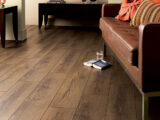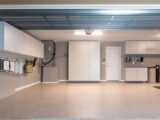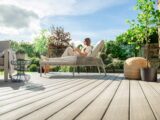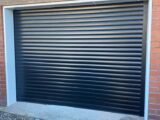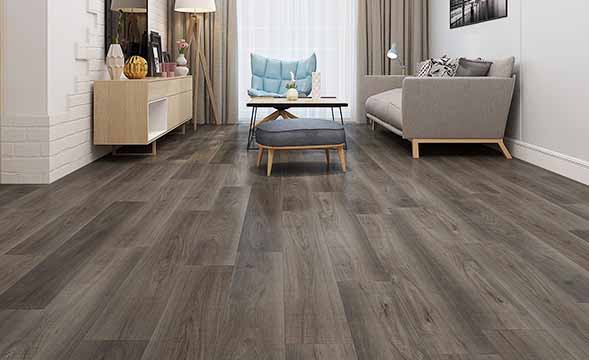
SPC Flooring The Ultimate Guide to Durable and Stylish Flooring Solutions
April 10, 2025Introduction
When choosing the right flooring for your home or business, durability, aesthetics, and ease of maintenance are key factors. Stone Plastic Composite (SPC) flooring has emerged as a revolutionary Flooring Dubai option that meets all these requirements. SPC flooring is known for its rigid core, water resistance, and versatility, making it an ideal choice for residential and commercial spaces alike.
In this article, we will explore what SPC flooring is, its benefits, installation process, and how it compares to other flooring options.
What is SPC Flooring
SPC flooring is a type of rigid core luxury vinyl flooring composed of a blend of limestone powder, polyvinyl chloride (PVC), and stabilizers. This combination results in a highly durable, waterproof, and stable flooring option that can withstand heavy foot traffic and moisture exposure.
Composition of SPC Flooring
SPC flooring is structured in multiple layers, each serving a specific purpose:
Wear Layer: A transparent top layer that provides scratch and stain resistance.
Vinyl Layer: This layer adds the desired aesthetic by mimicking wood, stone, or tile textures.
SPC Core: The rigid core made of limestone and PVC, offering exceptional stability and impact resistance.
Backing Layer: Provides additional support and sound absorption for comfort underfoot.
Benefits of SPC Flooring
Waterproof and Moisture-Resistant
One of the standout features of SPC flooring is its 100{0f0f956d7579fe9490c069a4f5e7773665de86847739b8feb26399e5e6edad85} waterproof nature. Unlike traditional hardwood or laminate flooring, SPC flooring does not swell or warp when exposed to moisture, making it an excellent choice for kitchens, bathrooms, and basements.
Durability and Impact Resistance
Thanks to its rigid core, SPC flooring is more durable and impact-resistant than traditional vinyl flooring. It can withstand heavy furniture, foot traffic, and daily wear and tear without denting or scratching.
Easy Installation
SPC flooring comes with a click-lock system that allows for a hassle-free installation process. Unlike traditional flooring options that require adhesives or nails, SPC planks can be installed using a floating method, making it a perfect DIY project.
Comfort and Sound Absorption
With an integrated underlayment or backing layer, SPC flooring offers a comfortable surface to walk on while reducing noise levels. This makes it a great option for apartments, offices, and multi-level homes.
Aesthetic Variety
SPC flooring comes in various designs, colors, and textures that mimic the look of natural materials like wood, stone, and ceramic. Whether you prefer a rustic wooden look or a modern marble finish, SPC flooring offers an aesthetic solution to suit every style.
Low Maintenance
Unlike natural hardwood or stone floors that require special care, SPC flooring is easy to maintain. Regular sweeping and occasional mopping with a mild detergent are enough to keep it looking new.
Eco-Friendly Option
SPC flooring is often made with environmentally friendly materials that do not emit harmful chemicals. Many manufacturers ensure their SPC flooring meets international environmental and safety standards.
Installation Process of SPC Flooring
Installing SPC flooring is straightforward, thanks to its innovative click-lock system. Here is a step-by-step guide:
Prepare the Subfloor
Ensure that the subfloor is clean, dry, and level. Any bumps or debris can affect the installation.
Acclimate the Flooring
Allow the SPC planks to acclimate to the room temperature for at least 24 hours before installation.
Start Laying the Planks
Begin by placing the first row of planks along the longest wall. Use spacers to maintain an expansion gap of about 1/4 inch from the wall.
Click and Lock the Planks
Align the next plank and gently click it into place. Continue this process until the entire floor is covered.
Trim and Finish
Use a utility knife to cut planks where necessary to fit around corners and edges. Once all planks are in place, remove spacers and install baseboards or molding for a finished look.
SPC Flooring vs. Other Flooring Options
SPC Flooring vs. Traditional Vinyl Flooring
SPC flooring has a rigid core, making it more durable than traditional vinyl.
Traditional vinyl is softer and more prone to dents and scratches.
SPC flooring is completely waterproof, whereas some vinyl flooring options may not be.
SPC Flooring vs. Laminate Flooring
Laminate flooring is water-resistant but not fully waterproof, making SPC flooring a better choice for moisture-prone areas.
SPC Flooring Dubai is more durable and impact-resistant due to its limestone core.
Laminate flooring requires a separate underlayment, whereas SPC often comes with an attached backing layer.
SPC Flooring vs. Hardwood Flooring
Hardwood flooring is a premium option with natural beauty but is susceptible to moisture damage.
SPC flooring mimics the look of wood while being waterproof and more affordable.
Hardwood requires regular refinishing, while SPC flooring is low-maintenance.
Conclusion
SPC flooring is a game-changer in the flooring industry, offering durability, aesthetic appeal, and ease of maintenance. Its waterproof properties, impact resistance, and simple installation process make it a preferred choice for homeowners and business owners alike. Whether you are renovating your home or designing a new space, SPC flooring provides a stylish and practical flooring solution that stands the test of time.
If you are looking for a flooring option that combines beauty with performance, SPC flooring is an excellent investment. With its wide range of designs and unmatched durability, it is no surprise that SPC flooring is becoming one of the most popular choices in modern interiors.


